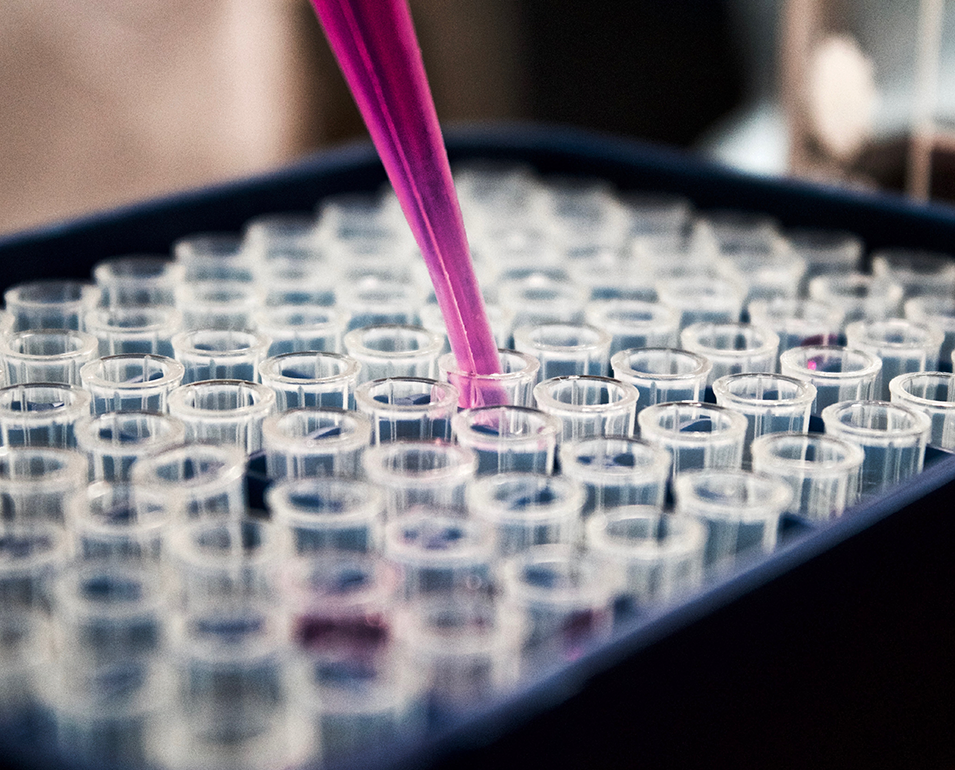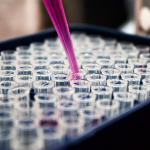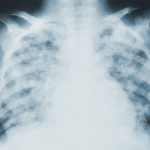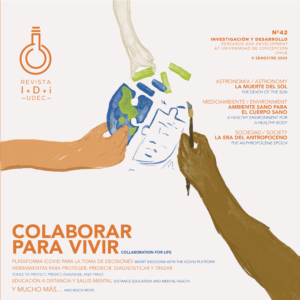By Fabiola Valdebenito / favaldebenito@udec.cl
Ir a la Version en Español
Only a few wandering souls can be found on the Enrique-Molina grounds of the Concepción campus. The advancement of the COVID-19 pandemic has made the start of the 2020 academic year unique in the hundred-year history of the Universidad de Concepción, resulting in a distance-learning model that means, in these times, the classrooms are silent.
Close to eight in the morning, the quick steps of Bárbara Alarcón break the resounding silence as she walks along the central UdeC pathway towards the bell tower. Just like every day since March 23rd, Bárbara, a PhD candidate in Analytical Sciences and Technology, arrives to the Faculty of Pharmacy to carry out volunteer work, a task also taken on by two of her program peers and six faculty members from the Department of Clinical Biochemistry and Immunology.
These volunteers represent a group of professionals that answered a call made by the Ministry of Science, Technology, Knowledge, and Innovation (MINCYT, Spanish acronym), a call to form part of a university network of diagnostic laboratories. This network has taken on an important responsibility in the middle of an unprecedented health crisis, transforming time normally dedicated to educational training into a real, concrete contribution to protecting lives.
Making the decision to come face to face with the dangerous SARS-CoV-2 was not easy for Bárbara. After a conversation with her husband, who encouraged her and insisted it was a “commitment for both of them,” Bárbara decided to join the team at the UdeC-Omics Laboratory of Molecular and Proteomic Diagnostics. This laboratory has, as of today, analyzed close to 900 exams for the public health system.
Entering the laboratory, located on the second floor of the Faculty of Pharmacy, requires completing a rigorous procedure to minimize infection risks. A storage room that once served to house reagents is now used as a dressing room where volunteers change their clothes and put on a uniform exclusively for their work, which includes disposable boots and a white lab coat.
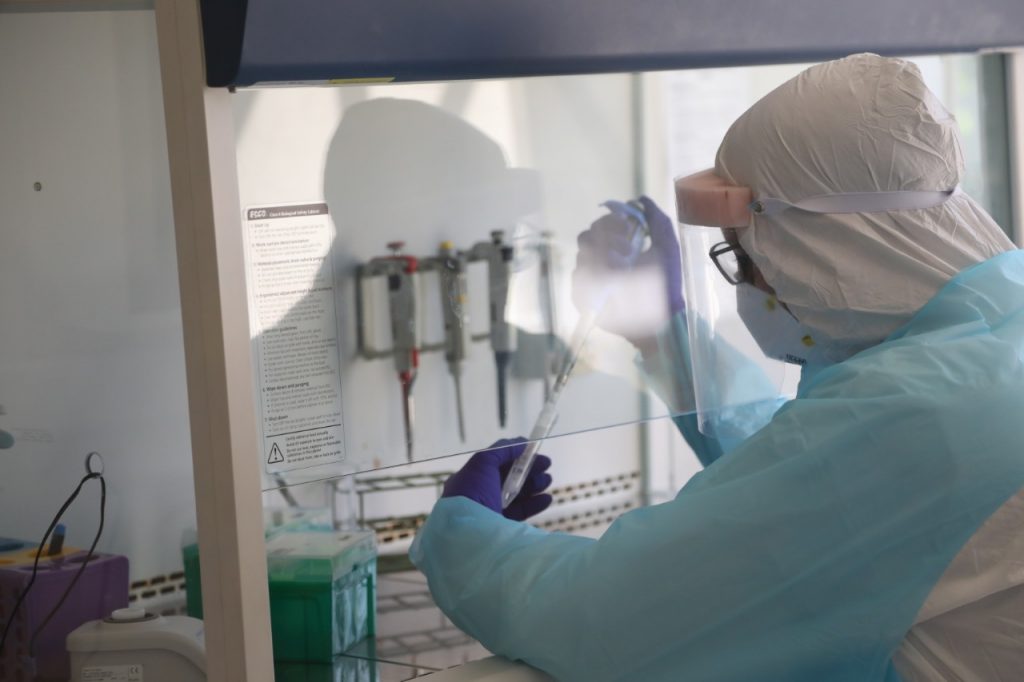
Once inside, blue arrows drawn on the floor indicate a specific route to follow to decrease the threat of spreading possible infection. As if she were following the yellow-brick road, Bárbara advances towards the sink to wash her hands and, to the left, towards where she will put on her armor: a gown, an N95 mask, two layers of gloves, a cap, and goggles.
Ready to start her work, she sees a small Styrofoam box sitting still on the central workbench in the room. This box contains swabs with samples from dozens of people that urgently await a reply – a positive or a negative test result could mean the start of a fight for survival.
TESTING, TESTING, AND MORE TESTING
The massive use of tests to identify the presence of the SARS-CoV-2 virus has been a fundamental tool in controlling the COVID-19 pandemic. Due to this, Dr. Ricardo Godoy, Dean for the Faculty of Pharmacy, is proud that a scientific team from within the faculty he directs was among one of the first to respond to the call made by Mincyt to convert university laboratories into diagnostic centers.
According to Dr. Godoy, the Laboratory of Diagnostics is the result of successful coordination between the public, private, and academic sectors. This coordination has, for example, allowed the public system to use equipment from private businesses. These outcomes have been thanks to diverse coordination efforts of faculty members, as led by Dr. Liliana Lamperti and Dr. Claudio Aguayo. This coordination has meant that diagnostic work is helped by a robot that extracts RNA, as provided by the business BioForest de la Celulosa Arauco, and by a real-time PCR machine donated by the aquatic foods company Cargill.
From the public sphere, this work has been recognized through certification by the Institute of Public Health, a resolution that allows the Laboratory of Diagnostics to run under the supervision of the Concepción Health Service so as to provide support throughout the duration of this crisis.
SWELTERING HEAT INSIDE THE SUIT
“While we have been taught how to work with pathogens, no profession is prepared for the realities of this pandemic,” comments Dr. Enrique Guzmán, a PhD in Biological Sciences and instructor for the Faculty of Pharmacy.
Dr. Guzmán has worked as a volunteer at the Laboratory of Diagnostics for nearly two months and perfectly understands the risks associated with coming face to face with an extremely contagious and lethal virus every day. The fear of getting infected and of infecting his family means that, “…there are apprehensions, but if I am able to help, I can’t turn a blind eye.”
The yellow symbol for “biological risk” marks the entrance to the Laboratory of Diagnostics, which was constructed in 2017 with a level 3 biosecurity rating. This means that it is suited for work with pathogenic agents that can cause serious or potentially lethal infections. Dressed in his plastic armor, Dr. Guzmán is ready to enter into one of the two work areas where viral RNA extraction is carried out, which is the step before PCR amplification.
Through a small window on the wall adjacent to the area where the virus is inactivated, the scientist receives the microtube rack. Over the next hours, Dr. Guzmán will be fused to a class 2 biological security cabinet, a cubicle measuring no more than 80 centimeters wide. This forces Dr. Guzmán into an uncomfortable position; hunched over and with little ventilation, he sweats intensely. “We can take an hour and a half to process 25 samples. During this time, we are sweltering because of the heat caused by the plastic suit. On top of this, the N95 mask causes a suffocating sensation,” comments Dr. Guzmán.
Once the samples are purified, they are once again ordered onto the rack. The small, fragile, and seemingly inoffensive Styrofoam container is returned to the adjacent room. The task for the day is done, with a bittersweet taste. Some of these tubes will be positive for COVID-19, and that is when a numbered label takes on a human face.
“As a team, we have given our all for the patients, and a beautiful environment has been created where we give the best of ourselves for others,” comments Dr. Guzmán as he puts on his backpack and starts his way back home, crossing what is, for now, a lonely UdeC.
More information:
Enrique Guzmán: eguzman@udec.cl;
Ricardo Godoy: rgodoy@udec.cl

